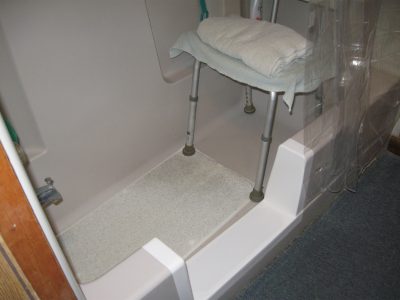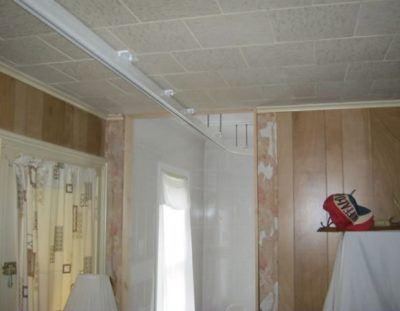© 2017 - 2025 Otsego Rural Housing Assistance, Inc.
Website Design & Development by Central NY Mobile Marketing, Inc.
An accessible home is important for people with disabilities and also for those who are aging. Accessibility modifications help to improve and maintain a safe and independent lifestyle.
Many simple day-to-day functions can be improve by simple modifications like grab bars in a bathroom, replaced light switches, new door handles, etc.
Other larger scale modifications can make big changes in daily life through things like new bathroom fixtures, ramped or modified step entrances, or kitchen modifications for wheelchair accessibility.
Remaining at home is a universal and powerful preference as people reach their older years. Simple safety and efficiency improvements should be recognized and undertaken early. Accident prevention is the first principle of Aging at Home. Falls that result in broken hips and limbs can bring about costly, long term complications in older people.
 Common causes of accidents at home that can be rectified through our programs include:
Common causes of accidents at home that can be rectified through our programs include:

Many people who are living with a disability or who are aging require assistance with some form of medical or therapy service. This is often done by either a family member or by a visiting professional. There may be specific health-related equipment needs such as air cleaners, air conditioning, and ventilation for breathing and bronchial conditions. A chair rail may be needed to avoid stair climbing for heart conditions. Bathroom modifications may be needed to enable safe toilet and bathing assistance.
Any of these or other such enabling methods will be decided based on the specific needs of both the person assisted and the care giver.
The assessment of a home for accessibility is an important part of our process and involves in-depth conversations with residents, their caregivers and our staff at ORHA.
We require input from clients about their daily personal and housekeeping activities, as well as a first-hand view of how clients move about their homes and where they store regularly used items.
We assess physical structures and possible impediments to develop a plan that is customized to the needs of each individual client.
Some of the information we look for during an assessment for home modifications involves items such as the following:
Otsego Rural Housing Assistance, Inc. proudly provides and preserves affordable housing in Otsego County, NY.
(607) 286-7244
orha@otsegoruralhousing.org
140 County Hwy 33W, Box 4
Cooperstown, NY 13326
(607) 547-8839
hcv@otsegoruralhousing.org
Otsego Rural Housing Assistance, Inc. proudly provides and preserves affordable housing in Otsego County, NY.
(607) 286-7244
orha@otsegoruralhousing.org
140 County Hwy 33W, Box 4
Cooperstown, NY 13326
(607) 547-8839
hcv@otsegoruralhousing.org
© 2017 - 2025 Otsego Rural Housing Assistance, Inc.
Website Design & Development by Central NY Mobile Marketing, Inc.